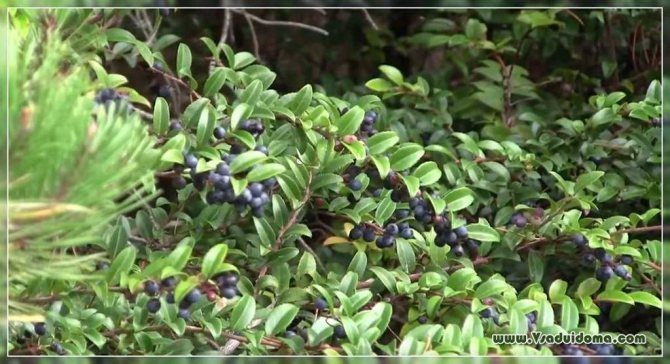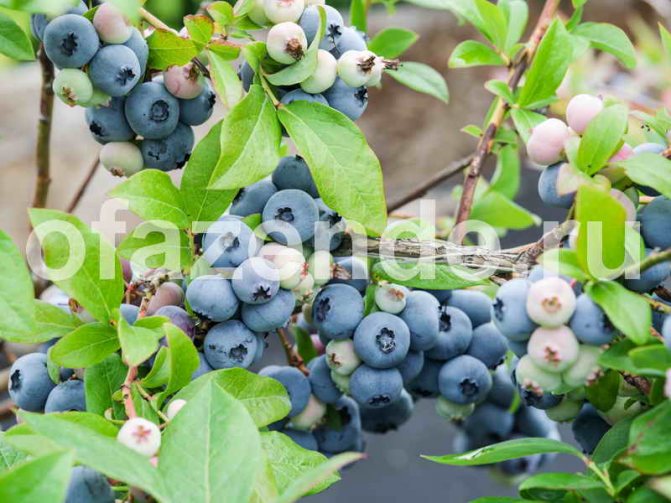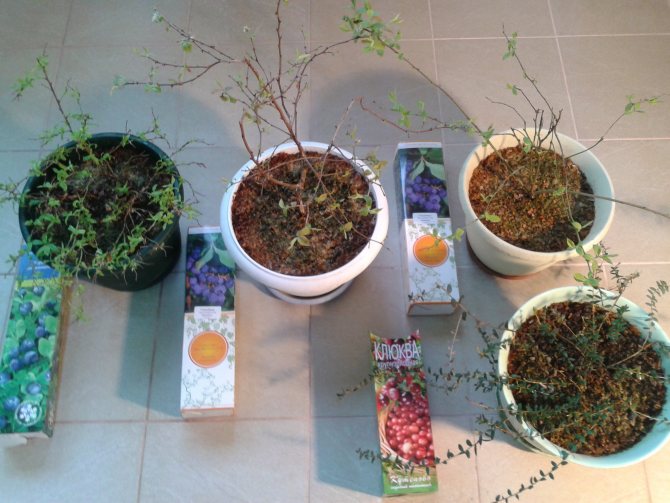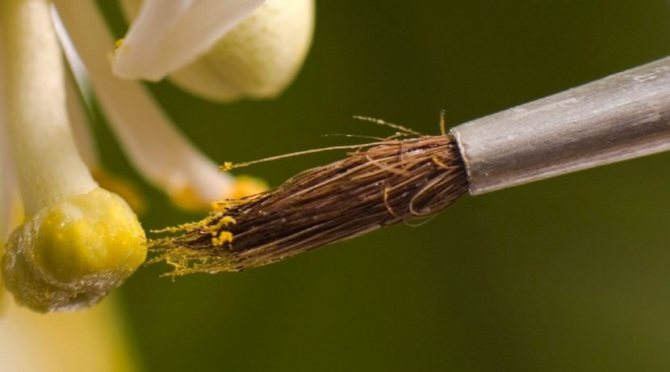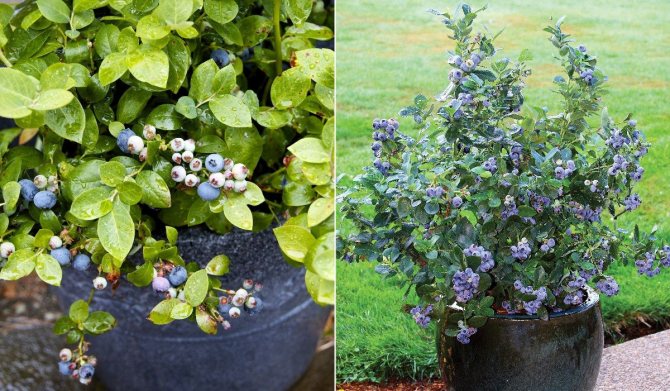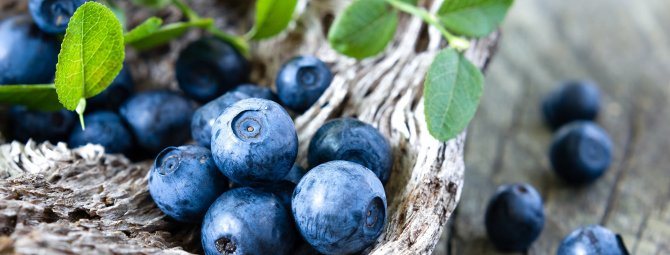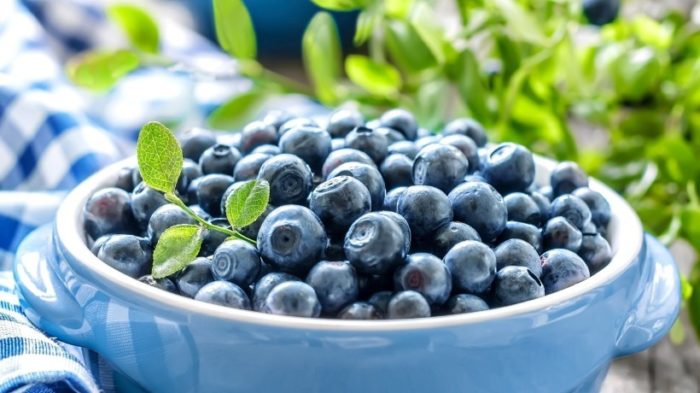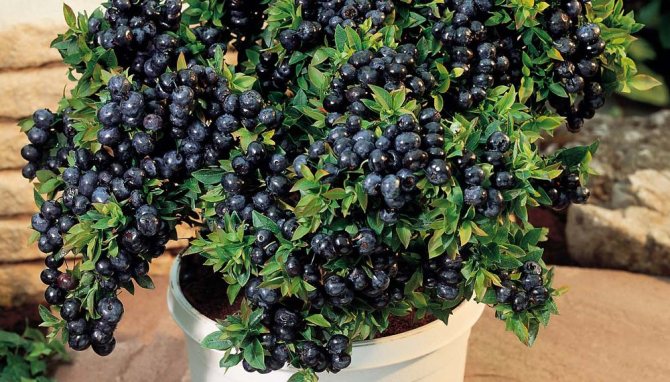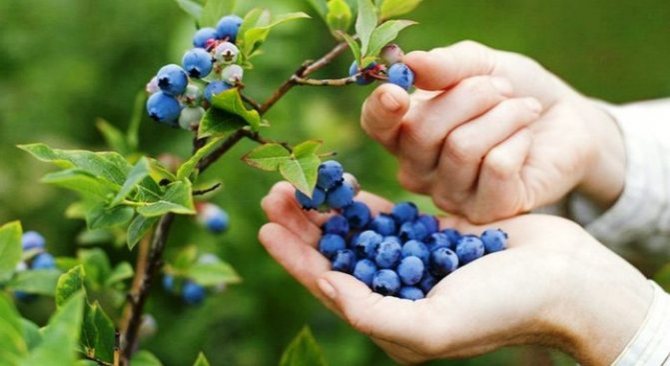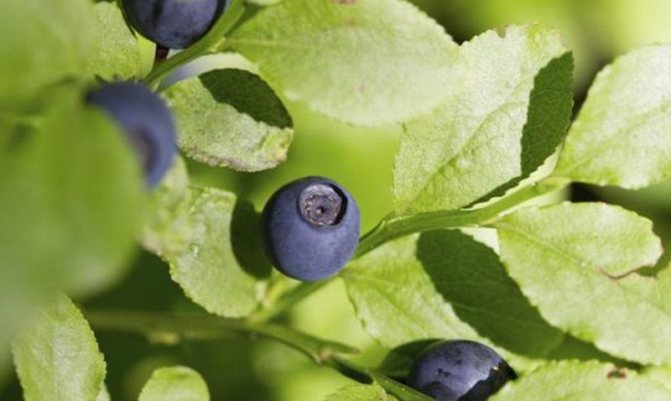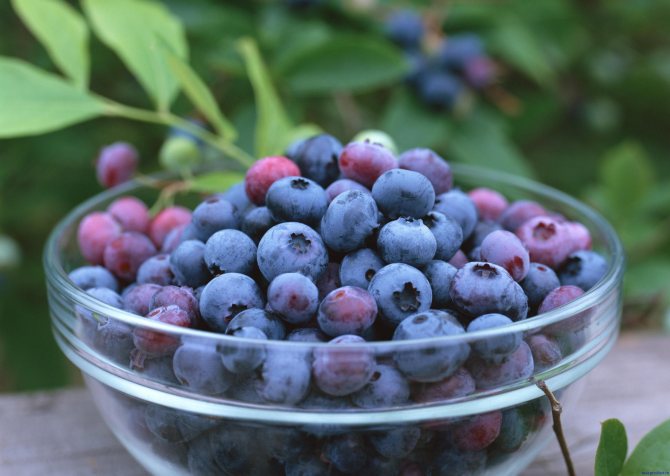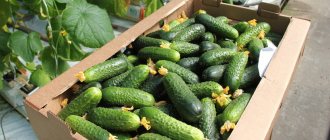Choosing a suitable planting site for blueberries
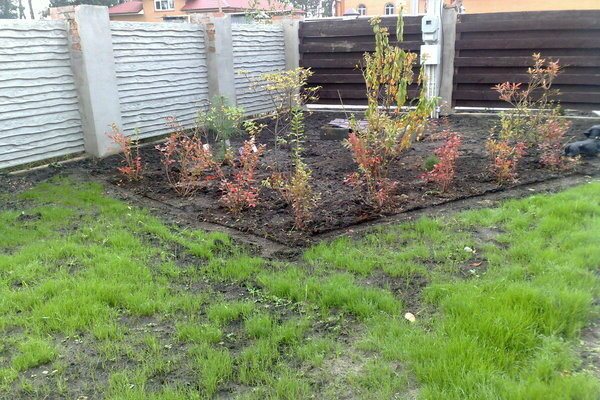
The habitat for blueberries is usually in the coniferous forest. Mostly pine. In this regard, it is necessary to create appropriate conditions on the site. Such as moderate moisture and acidity of the earth. Growing garden blueberries is best done in an area well-lit by the sun. But not in a shaded area. And the excessive moisture of the earth is unacceptable for blueberries.
The necessary conditions
For blueberry cultivation to be successful, it needs to be provided with suitable conditions. The correct choice of varieties, depending on the climatic conditions of the region, will help to grow a culture.
Climate
There are many domestic plant varieties that can be grown in a variety of climates. The bushes do not suffer from cold temperatures in winter.
If less than 40-50 days remain between harvesting and the arrival of cold weather, early frosts up to -10 degrees can provoke damage to the bushes. At the same time, late spring frosts are unlikely to harm the plant, since blueberries bloom in the second half of May.
Illumination of the site
In natural conditions, blueberries grow in pine forests. Garden varieties should be planted in sunny areas or in partial shade.


Soil composition and acidity
The plant likes a fairly moist soil. In this case, it is advisable to choose a soil with an acid reaction.
Favorable and undesirable neighborhood
When growing blueberries in the country, it is not recommended to plant them near fruit and berry crops or vegetables, which require the use of active organic matter for feeding. Coniferous or deciduous trees that do not require the use of fertilizers are a good option.
Soil preparation on site
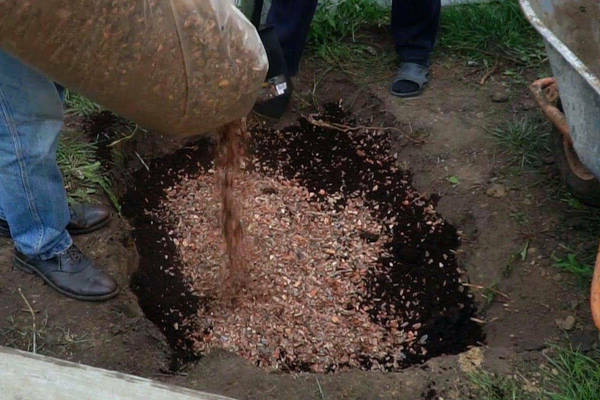

Standard garden soil is not suitable for blueberries. In the wrong conditions, it will begin to turn yellow and may simply die. Based on this, the ground must first be prepared. You need to start this in advance. If sowing is scheduled in October, then preparation must be carried out no later than September.
At the same time, a hole of 1.5 by 1.5 m and a depth of 60 cm is prepared for each plant. If the soil is light, then you need to add peat crumbs to it in a ratio of 2 to 1. And also kitchen waste, sawdust, crushed oak bark or humus from leaves. The best acidification of the earth is facilitated by 150-250 grams per square meter. m of sulfur in powder form. Ordinary river sand is introduced into heavy lands. Immediately before sowing, the soil in the hole usually settles.
Care rules
In order for the blueberry bush to continue to bear fruit for decades, it needs to be looked after based on the specifics of the plant. Basic care measures:
Blueberries growing in the garden need abundant watering. The culture is moisture-loving, so it is important to moisten the soil in a timely manner. With insufficient watering, the bushes will wither, the berries will become dry and tasteless.
On a note. Gardeners need to take into account the fact that garden blueberries do not tolerate strong water stagnation. If the roots are constantly in water, it will lead to root rot.
If the weather is dry, then the bushes are watered once every 5 days. In a rainy summer, watering is done as needed. Plain water can be alternated with acidified water.
To keep the ground slightly moist, and no crust forms on the ground, the hole is mulched with sawdust or peat, a layer of mulch should be made at least 3 cm.
If the plant grows in an open, well-lit area, then the bushes should be sprayed with standing water in the morning or evening hours, when the sun is not active.
Growing garden blueberries: the right sowing scheme
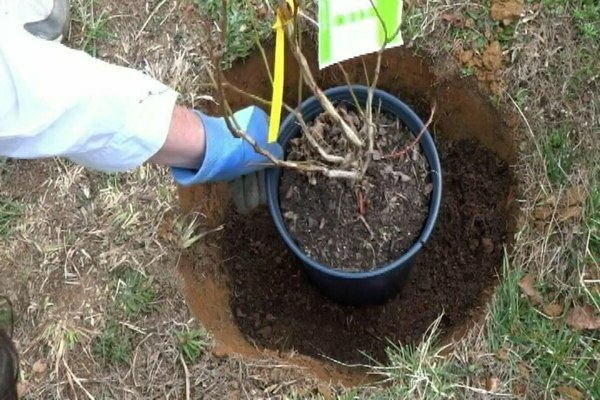

If you plan to plant blueberry cuttings in an even row, then the distance should be at least 1.5 m. And for planting in two rows it is necessary to leave up to 2.5 m. Before planting the plants, the roots of the plant must be straightened. And loosen a lump of soil. A hole is made in the prepared soil in relation to the size of the roots. It is necessary to moisten it, then plant a seedling and cover it with earth. The soil around the bush must be compacted and watered.
Testimonials
It is preferable to plant blueberries in October and before early November. You can plant bushes in spring from March to April. It is best to plant two to three year old bushes, and older plants take root and soon bear fruit.
GENCE197420
We need to buy sour peat, wee 2–4! Dig a big 1x1 hole, fill up and plant! pour water with vinegar once a week, if clay soil - drainage from expanded clay. Growing with a bang! Sea of berries.
Anonymous
It is better to propagate by cuttings, at one time I planted a couple of bushes. They still bear fruit. Planted next to currant bushes, so as not in an open place. But it's better to buy in a trusted place, otherwise it is not known which variety you will buy, and whether blueberries at all.
Varchenov
Four years ago, I planted several young blueberry bushes on a prepared bed. In August, I made the soil for the beds based on peat mixed with sand, sawdust, with a small addition of sulfur (a quarter of a teaspoon). The bushes are located in the shade of the wettest place of the site. I planted it in two rows at a distance of 40 cm, sprinkling with diluted citric acid in water in a ratio of 1 to 10. The first fruits appeared only this year.
matros2012
Blueberries are a valuable berry crop. Growing it in the garden is not so difficult, you just need to follow the rules of agricultural technology. Gardeners love domesticated blueberries for their delicious berries that can be enjoyed without leaving home. Blueberry leaves and fruits are also widely used to boost immunity and improve vision. A beautiful shrub of light green color, which acquires a reddish tint in autumn, will serve as an excellent decorative decoration of the site.
Growing garden blueberries: the role of fertilizers
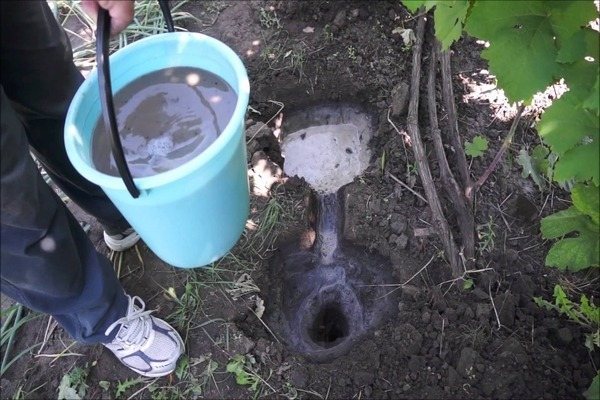

Mulch helps to reduce the amount of loosening, retain moisture in the soil. Helps control weeds. And in the summer, it does not allow overheating of the upper layer of the soil. It is more expedient to add sawdust to the soil near the plant, without overlapping the root collar, with a layer about 10 cm thick and mix them a little with the ground.
Also, a good option for dressing is various crushed kitchen waste. Straw and withered leaves can be used with the least efficiency.
How to feed properly
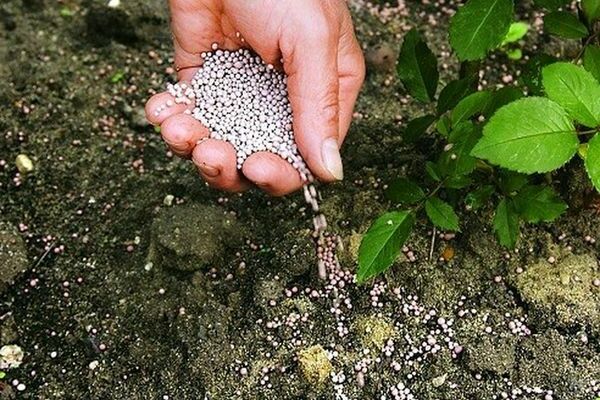

Blueberries will definitely reward you with an excellent harvest with proper feeding. Organic food for blueberries can be manure, humus or peat crumbs. Be sure to add them to the surface layer of the soil every 2-3 years, about 3-4 kg per square meter. m.
In turn, from mineral dressings, as a rule, superphosphate and potassium magnesium are used. And also ammonium superphosphate. If the acidity of the soil is low (pH above 5.0), then every year 50-60 grams of sulfur in the form of a powder is added to the base of the bush. With proper mulching, this procedure becomes optional.
Growing garden blueberries: pruning the right way
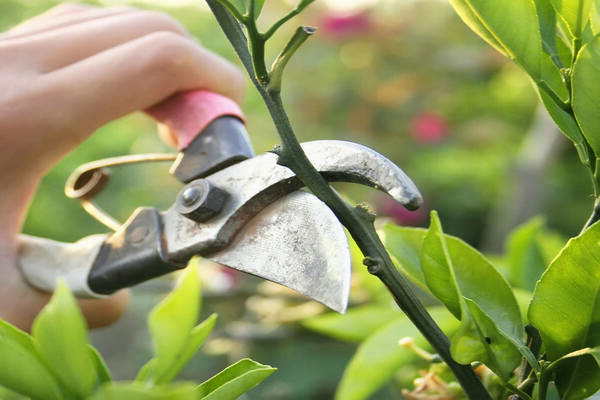

Competent breeding of this culture is almost impossible without correct pruning. As the bushes grow rapidly. It is more expedient to carry out the procedure at the beginning of spring, until the blueberries begin the process of bud development. Pruning during active flowering is not recommended. Because it can provoke a decrease in fertility.
When transplanting blueberries older than 3 years, the sprouts must be cut off to a length of 20 cm. In order for the bushes to give young strong shoots. At the moment when the plant grows for 3-4 years, it necessarily needs systematic pruning.
A strong and healthy shrub usually consists of 6-8 branches. Injured, dry or weak branches must be removed. It is also necessary to remove the lateral branches with buds. Since small berries grow on them and ripen much longer. Trees over 15 years old need to be pruned to rejuvenate to a length of 20 cm. This procedure is able to maintain fertility.
Protection against harmful insects / animals and diseases
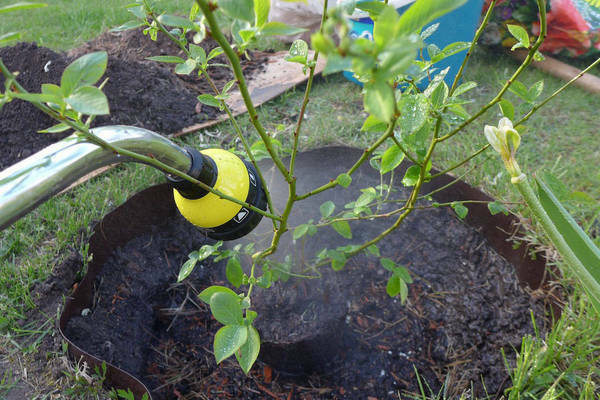

To protect plants from possible pests and diseases, you need to remove and burn fallen leaves, fertilize the bushes. By the way, if the leaves are affected by aphids, then the diseased bushes should be treated with insecticides. And from the well-known scabbard, it is necessary to spray it with Bordeaux liquid.
Often, miscosfereliosis damages the leaf blades of garden blueberries, which contributes to the formation of red-black spots. The bush is treated with a special Topsin or Fundazol solution (2 grams of solution per 1 liter of water). The appearance of dark brown spots on the leaf blades means rust damage. The control method will be the use of suitable anti-rust fungicides.
But gray mold can completely destroy all berries. In order to combat mold, blueberries are sprayed with a ready-made solution of Bordeaux liquid. First, before the flowering period. Then after the end of flowering. And the last time was a few weeks later. Often used are fungicides such as Topsin, Euparen, and Fundazol.
Berry picking and storage
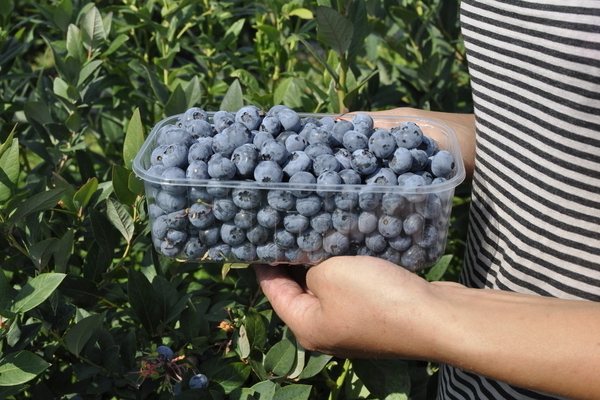

Blueberry picking usually takes place from mid-June to about early September. Due to the fact that blueberries do not ripen at the same time, they are usually harvested with an interval of 5-10 days.
It is more expedient to collect the crop in a plastic container, but not in a bag. Berries are predominantly dark, with a shade of blue-violet with an intact peel. In addition to the berries, the leaves of the plant are also harvested. During the flowering period, which usually occurs in May, from the branches that do not bloom, the leaves are collected and dried.
Usually they are used as a medicine as a hemostatic, astringent, diuretic and choleretic, as well as fortifying properties. The maximum benefit you can get from freshly picked garden blueberries. Berries for 6 weeks can be stored at 0 degrees in a cool and dark room.
Pros of the blueberry business
What is the beauty for a budding entrepreneur who decides to start a blueberry business?
- First, there is an extremely low supply of marketable berries and processed products on the market, which is due to seasonal dependence and the factor of annual yield for products harvested in places of natural growth. Low supply brings with it a shortage of berries, especially in lean years, extremely insignificant competition and fairly predictable pricing, which is an important factor in modern conditions.
- Secondly, in addition to making a profit from the output of the berry, blueberries also make it possible to receive money from by-products. For example, she is a wonderful honey plant and if you have your own apiary, a blueberry plantation will provide your farm with amazing heather honey, so poetically sung by the highlanders of foggy Scotland.If you do not have an apiary, and the blueberry is quite extensive, then you can attract third-party beekeepers, which will also not leave you without fragrant honey, based on the principles of mutually beneficial cooperation. In addition, certain money can be obtained even from waste, because when thinning plantings of blueberries, leaves and stems can be harvested, dried and handed over to procurers of medicinal raw materials.
- Thirdly, blueberries are not yet sufficiently cultivated in domestic realities and, as a result, are not very susceptible to diseases and pests, as invariable companions of intensive farming.
- And lastly, this berry is guaranteed a stable sale, especially in the south of the country, where it does not grow under natural conditions, the purchasing power of the population is quite high, the berry supply is represented mainly by traditional crops, and the network of wholesale and retail trade and restaurant business facilities is well developed.
A categorical plus when organizing a business on the cultivation of blueberries should be considered that its berries, in the case of leftovers from the sale in fresh form, are perfectly processed and stored, which makes it possible to more evenly receive the distribution of profits and the receipt of funds and winter time, in the so-called off-season period.


Seed-grown blueberries
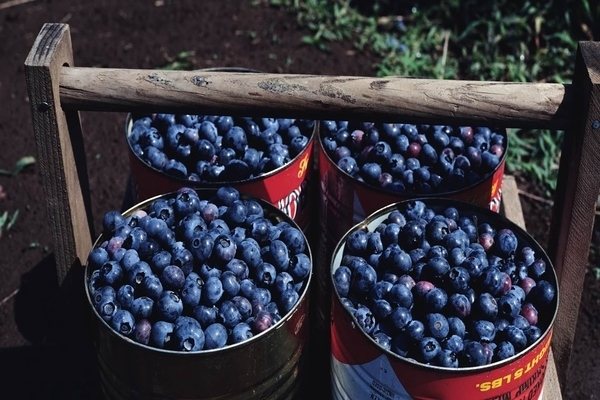

To get seeds from berries, you need to knead and stir them with water. Empty seeds will float to the surface. Do this several times. Until the water seems clear and there are no seeds left at the bottom.
Then the seeds should be dried on a paper towel. By the way, you can plant with it, after cutting it into a container with peat. After a week, sprouts will appear. In winter, boxes with sprouts must be kept in a well-lit room at a temperature of at least 5-10 ° C. In the spring, the seedlings must be dived, and then left to grow, but they can be planted permanently only for the next year.
When can the first harvest be harvested?
Berries on blueberry bushes that have grown after planting seedlings appear, as a rule, in the 3rd year after planting. If you started the process by sowing seeds, such bushes will begin to bear fruit later, perhaps even after 5 years. You need to pick berries that have a rich dark blue color. They should come off easily if the fruits are tenacious - it is quite possible that they are not yet ripe.
Learn how to use blueberries for a laxative and firming effect.
Berries can be stored in the refrigerator for up to 10 days if properly processed: you need to rinse the fruits with cool water, spread them on a paper towel to dry, and then transfer them to a shallow container, which is placed on the bottom shelf of the refrigerator.
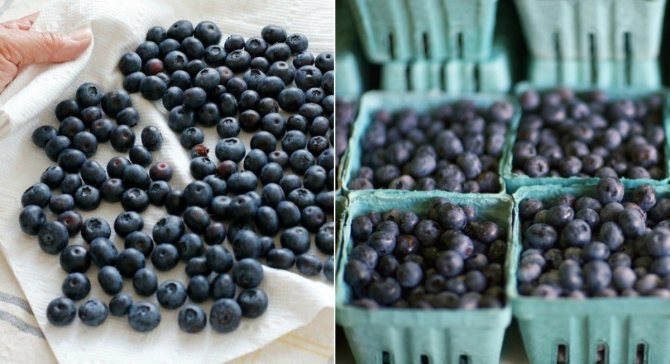

Growing garden blueberries: dividing into cuttings
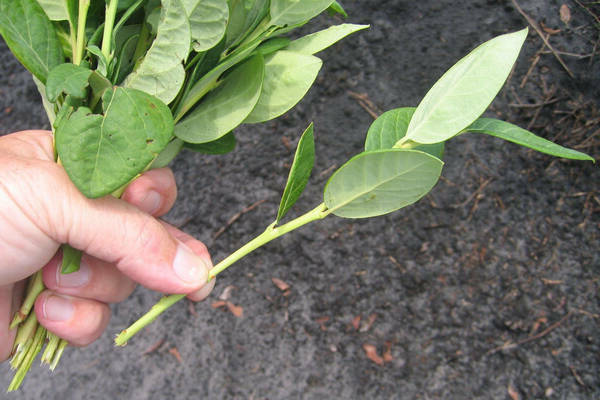

Strong shoots of garden blueberries serve as material for dividing into cuttings. Usually in the last days of June - the first half of July, sprouts about 4-6 cm long are cut off with a sharp, and most importantly, a sterile knife. The lowest leaves must be removed. And cut the remaining ones by about half in order to reduce moisture evaporation.
The edge of the cutting should be treated with a special root stimulant. Then you need to prepare a container for planting. Pour into a prepared container 6-8 cm of peat or peat-bog soil and about 2-3 cm of thoroughly washed ordinary river sand.
The sprouts must be planted in the sand so that they cannot reach the peat layer. And stretch the top of the box with foil or cover with glass. From time to time, the cuttings must be ventilated and systematically sprayed, preventing the sand from drying out. In the spring, strong cuttings are transplanted to their permanent place.
Growing garden blueberries on your site is a complex laborious process that requires knowledge, skills and, which is important, patience, since the harvest from the planted plants has to wait for years.
Reproduction methods
Blueberries multiply in many ways. To do this, you can use cuttings, dividing the bush or the seed method.
From seed
To get seeds, you should take ripe berries and mash them. Rinse the resulting gruel in water. When immersed in the liquid, the seeds will rise to the surface. The seed should be dried and disinfected. Then it is placed in pots filled with peat. Before replanting plants to a permanent place, they can be germinated at home.
By dividing the bush
To breed a crop in this way, the mother plant should be dug up and divided into partial bushes. It is desirable that they have 5 intact kidneys. Planting a culture is carried out in the usual way.
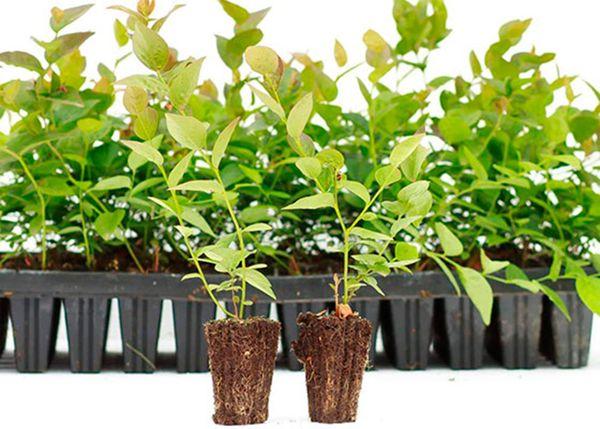

Cuttings
To propagate a plant by cuttings, it is worth preparing planting material. To do this, it is recommended to choose the most powerful bushes, cut off healthy branches from them. Place the resulting cuttings in containers filled with peat and water systematically. In autumn, the cuttings are transferred to the prepared wells.


